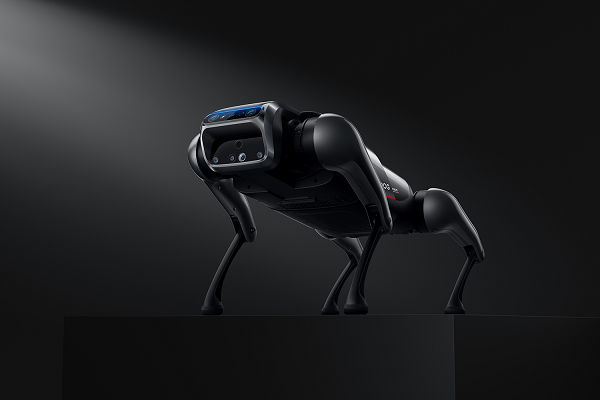Xiaomi Introduced Voice-Controlled Cyberdog Robot
 Xiaomi has debuted a robotic ‘Cyberdog’ controllable by voice command. The Chinese tech giant is pitching the four-legged metallic canine as an open-source platform for experiments in robotics with a ‘pet-like nature’ as its name suggests, albeit one that could be more obedient to commands than its organic counterparts.
Xiaomi has debuted a robotic ‘Cyberdog’ controllable by voice command. The Chinese tech giant is pitching the four-legged metallic canine as an open-source platform for experiments in robotics with a ‘pet-like nature’ as its name suggests, albeit one that could be more obedient to commands than its organic counterparts.
Cyberdog’s Life
Cyberdog is a very sci-fi creation in look and function. The 6.6-pound robot is able to follow its owner at about seven miles an hour on stairs or flat surfaces, even performing backflips. The robot is packed with cameras, microphones, touchpads, GPS, and other sensory equipment to help it navigate and respond to voice commands. When it hears its wake word, it will ‘look’ at the speaker, using posture and face recognition to keep track of the person as it obeys orders issued vocally or through a connected app. The hardware can also be augmented via the USB-C and HDMI ports on the robot. Extra lights, cameras, and other equipment can be mounted and integrated by the robot. The same goes for software, thanks to Xiaomi making it open-source.
“The launch of CyberDog is the culmination of Xiaomi’s engineering prowess, condensed into an open source robot companion that developers can build upon. CyberDog is Xiaomi’s first foray into quadruped robotics for the open source community and developers worldwide,” Xiaomi explained in announcing the robot. “To add to its pet-like nature, users can use voice assistants to command and control CyberDog by setting a wake word or simply use its accompanying remote and smartphone app. CyberDog can be called on for the most unique tasks, and the ways in which it can be interacted with holds unforetold possibilities.”
The Cyberdog is easy to compare to Boston Dynamics’ Spot robotic quadruped. Spot is currently employed in tasks like minesweeping and telemedicine, but its $74,500 price tag puts it well out of reach of the average consumer. Xiaomi is selling Cyberdog for a relatively cheap 9,999 Yuan, about $1,540, although that may just be for the initial thousand robots it has released for sale. Those are only for robotics fans, engineers, and those who really like Xiaomi, according to the company, however. Presumably, as the open-source experiments continue and Xiaomi refines the robot, it could become more expensive to match its effectiveness.
Robot Rumble
The bigger robotic debate may be on dog-like versus human-shaped robots. Softbank semi-retired the humanoid robot named Pepper recently, but AI-enabled humanoids are popping up all the time, especially in healthcare. The scooter mixed with a tablet computer named temi is spreading to hospitals and care homes, and Mylo from CR Robotics is somewhat splitting the difference with a cat-face on its wheeled robot designed to be a friendly, comforting image for people with Alzheimer’s to interact with on a daily basis. For a more explicitly humanoid robot, Singularity Studio and Hanson Robotics created Grace, which looks like a woman’s head and upper torso and can converse with users about a range of subjects, particularly physical and mental health.
As far as voice assistants and robots, Amazon and Google have been relatively quiet, but Amazon reportedly had more than 800 people working on its rumored Alexa-enabled robot. The robot, rumored to be named Vesta after the Roman goddess of the hearth, has been under development for four years at Amazon’s Lab126, the birthplace of Alexa and the Echo smart speaker. Those who like the idea of a less intense robot pet may prefer something like Panasonic’s Nicobo. Only 320 were made after a $100,000 crowdfunding campaign for the farting robot cat with voice and facial recognition.
Follow @voicebotai Follow @erichschwartz
Panasonic Crowdfunds $100,000 for Farting Robot Cat You Can Teach to Talk








